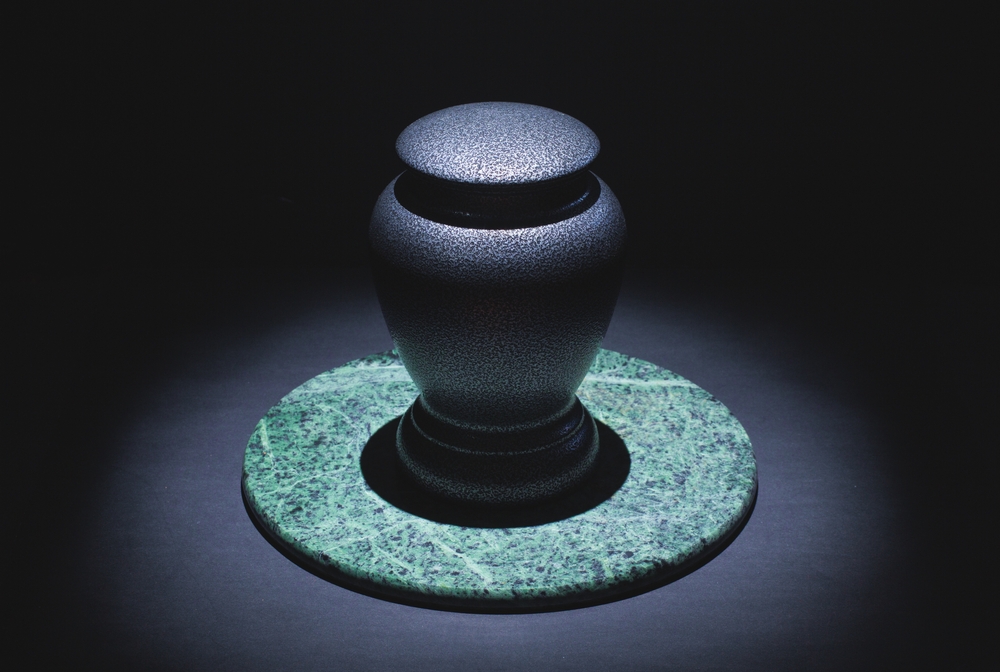Different Types of Cremation: Which Is Right for You?
Published May 24, 2022

In 2015, the number of cremations overtook that of traditional burials, and they have continued to rise in popularity, owing to their affordability and flexibility.
The cremation process can be defined as the method of body disposition that serves as an alternative to traditional casket or coffin burials. The body is prepared and placed into a cremation chamber, where it is incinerated at a temperature of 1400–1800 degrees Fahrenheit in an industrial furnace. The body is reduced to its basic chemical compounds—ashes, gases, and mineral fragments known as cremains. The ashes are then transferred to a temporary urn or the urn provided by the family.
Apart from this form of disposition, there are other types of cremation for a person to consider. We have put together all the essential information you need to know when choosing the type of cremation.
Types of Cremation
- Direct cremation Direct cremation is the placement of the body in a cremation chamber, where it is incinerated using very high temperatures. When proceeding with direct cremation, the body is not embalmed, and there is no viewing of the body because it is cremated right after the person passes away. This is one of the most affordable cremation options.
- Cremation and a traditional service This cremation option is the most common form of cremation. The body is embalmed, and a casket is rented for visitation and viewing. The funeral service is conducted as usual, and then the body is cremated. This is the most costly of the cremation methods.
- Cremation and a memorial service With this type of cremation service, the body is cremated, and the ashes are placed into an urn. The cremains are either kept separately from the venue where people gather to pay their respects, or the urn is placed in the venue.
- Cremation with the body donated to science Some people choose to donate their bodies to science. In this case, the organizations that conduct scientific research handle the cremation and pay for it once the experiments have been completed.
- Aqua cremation A new alternative to traditional cremation is alkaline hydrolysis, also known as aqua cremation, aquamation, or bio-cremation. During this process, the body is placed into a special chamber where it is subjected to water, heat, potassium hydroxide, and pressure. After a few hours, the body is reduced to white ash, which is the bone mineral remains. Up to 30% more ashes are retained during aqua cremation than traditional cremation. This process also uses less energy and produces significantly less carbon dioxide. It is, therefore, a much more environmentally friendly method of cremation. It is currently legal and available in seven US states and some parts of Canada and is being petitioned in the UK. As aqua cremation becomes more widely recognized and accepted, the cost will be comparable to traditional cremation.
Reasons Why People Get Cremated
Here are five general reasons why people choose cremation over traditional burial.
- Cost On average, cremation costs 40–50 % less than traditional ground burial. Cremation is typically cheaper because it doesn't require a casket, grave, or headstone. Many families also leave out the embalming process and have the body cremated immediately, reducing costs further.
- Simplicity Cremation removes the need for elaborate funerals, viewings, pallbearers, and ground burial ceremonies. An urn is much smaller than a casket and is much easier to handle.
- Flexibility Because of its compact size, it is easy to transport and store at home. Cremation also eliminates the limited time frames that funerals have, and the family can hold on to the urn until they decide to arrange a burial or scatter the ashes.
- Environmental benefits The embalming process involved with traditional burial often involves the use of heavy doses of chemicals. Although cremation releases carbon emissions, it is still more environmentally friendly than burial. Traditional burial also takes up a lot of space on the earth. Green cremation is on the rise, and more people are looking to aqua cremation to reduce their impact on the earth.
- Less traditional and more personal While some cultures and traditions still emphasize religious traditions, there is a general trend moving away from traditionalism, so much so that even internet cremation has emerged. People are choosing to celebrate the person in a unique and meaningful way. Cremation allows people to design a one-of-a-kind memorial for their loved ones. Scattering ashes is a popular choice and can be done in several unique ways, including from a helicopter, at sea, through fireworks, etc. Another popular option is to bury the cremated ashes, while others choose to keep the ashes.
Affordable Cremation Options
Direct cremation remains one of the least expensive disposition options because expenses like embalming, caskets, funeral services, transportation, and headstones aren't required. However, there are costs to consider with any cremation service you choose. If you plan to bury the cremains in a cemetery plot or place them in a columbarium, there will be costs for those services. You will also need to purchase an urn, and cremation urn costs vary depending on size, shape, and material.
Direct cremation is the answer if you are looking for the most affordable cremation option.
With direct cremation, you can generally expect to get:
- Cremation at your crematory of choice
- Secure care of your loved one's body
- On occasion, your loved one's obituary posted on the crematory's website at no cost
- In-home final arrangement schedules
- The death certificate
- The cremains placed in a temporary urn or urn of your choice
There are many choices for cremation, but there is no right or wrong choice at the end of the day. What matters most is what is best for you and your family.
If you'd like to know more about cremation, check out our facts about cremation article.





